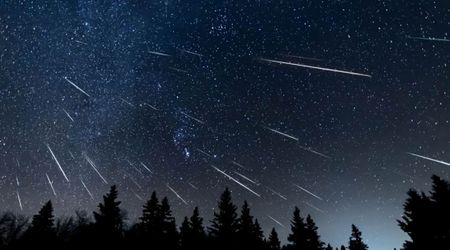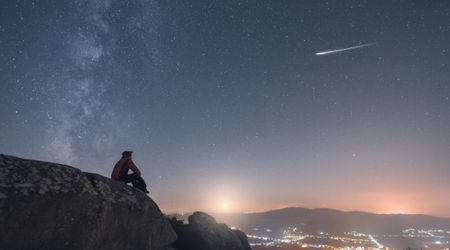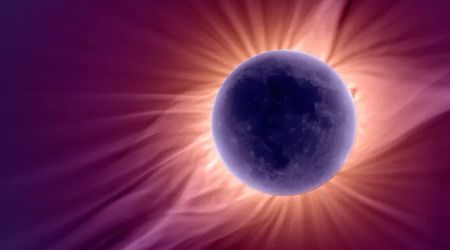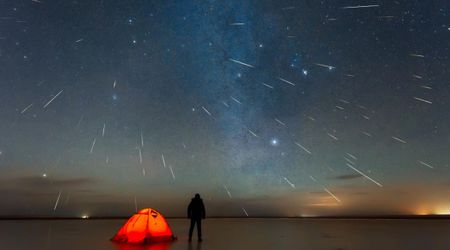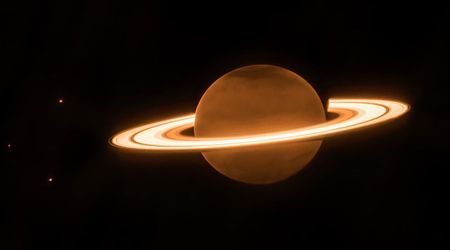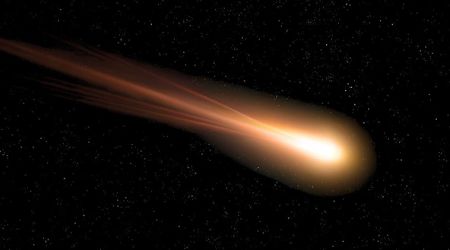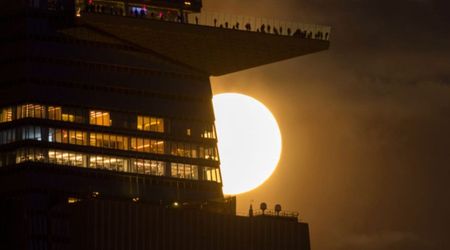What is in The Night Sky in November


Stargazing has delighted us since ancient times, providing beautiful vistas, engaging mysteries, and a consistent, reliable schedule of appearances of objects in the night sky, including some exciting, rare events.
But simply going outside tonight to view the stars may not work as you expect. While there’s always something happening in the night sky there are possibilities for less-than-ideal stargazing sessions.
Planning is the key to productive stargazing adventures. So, what’s the schedule for November 2022? What should be on our calendar? Potential backup dates? What is visible throughout the month?
Celestial Events
There’s always something to look at in the night sky with varying degrees of rarity or interest. Astronomical objects in the night sky follow a regular schedule. However, it might be a little more complicated or even disappointing if you don’t plan ahead.
While looking at the night sky on a clear night away from light pollution is a beautiful experience, finding something specific can be disorienting and frustrating. Knowing what to even look for may be a challenge.

November Events
Let’s review the exciting celestial events in November. While the peak is the best viewing time, the night(s) before and after will often still provide an opportunity to see the event. For the events that are more date-specific, a similar event will be on its way shortly (typically within a year and a half).
Taurids Meteor Shower Nov 4,5
- A meteor shower occurs when Earth’s orbit passes through dust and debris left by comets or asteroids. When these particles hit the atmosphere, they burn up, creating brilliant trails across the night sky. Most are no larger than a grain of sand.
- The Taurids is a minor annual meteor shower with about 5-10 meteors per hour from September 7 to December 10, peaking on the night of November 4th.
- Unlike other meteor showers, the Taurids come from two separate streams:
- The dust grains from Asteroid 2004 TG10
- The debris from Comet 2P Encke
- Viewing Tips:
- The nearly full moon (see more below) will block all but the brightest meteors, but you should still be able to catch a few good ones.
- Best viewing: just after midnight from a dark location far away from city lights.
- Meteors will radiate (or seem to come) from the constellation Taurus in the direction opposite your pole (in the southern sky if you are in the northern hemisphere and in the northern sky if you are in the southern hemisphere), but can appear anywhere in the sky.
Full Moon and total lunar eclipse Nov 8
- The Moon is located on the opposite side of the Earth as the Sun, fully illuminating its face.
- “Beaver Moon”: Early Native American tribes marked this full moon as the time to set beaver traps before the swamps and rivers froze. Other names are the Frosty Moon and the Dark Moon.
- A total lunar eclipse occurs when the Moon passes completely through the Earth's umbra, its dark shadow. The Moon will gradually get darker and take on a rusty or blood-red color. You can see an animation of what will happen from NASA (including the times of the different stages in UTC format) here.
- It will be visible throughout eastern Russia, Japan, Australia, the Pacific Ocean, and parts of western and central North America for this night. The next total lunar eclipse will be in 2025, but there will be 4 partial and penumbral eclipses between now and then. Check out NASA’s map to see if and when you will be able to see this total lunar eclipse
- No protective eyewear is needed to view the lunar eclipse and you can observe it with your naked eye, a pair of binoculars, or a telescope.
- A full moon radiates enough light to make viewing other objects difficult. Unless you want to observe the moon, full moons make night sky viewing cumbersome.
Uranus at opposition Nov 9
- Best time to view Uranus as its close distance and illumination from the Sun will make it brighter than any other time of the year. Uranus will appear as a tiny blue-green dot in all but the most powerful telescopes.
- The recent full moon will limit night sky viewing of all objects including this one, especially since Uranus is close to the Moon, between Aries and Cetus.
- You can try to view Uranus again in the nights after the closest approach when the moonlight is a little less harsh, particularly if it is a very clear night.
Leonids Meteor Shower Nov 17,18
- An average shower, with up to 15 meteors per hour at its peak
- Runs annually from November 6-30, peaks on the night of the 17th and morning of the 18th.
- Produced by dust grains left behind by comet Tempel-Tuttle
- It experiences a cyclonic peak about every 33 years with hundreds of meteors per hour, but we have to wait another dozen years.
- Viewing tips:
- The second quarter moon will block many of the fainter meteors, but be patient especially since the Leonids can be unpredictable so we may see more than expected.
- Best viewing will be from a dark location after midnight.
- Meteors will radiate from the constellation Leo in the East, but can appear anywhere in the sky.

New Moon Nov 23
- The Moon is located between the Sun and the Earth and is not visible in the night sky.
- Best time of the month to stargaze, especially for faint objects such as galaxies and star clusters as there is no moonlight to block them out.
General November Stargazing
Now that we have some dates to keep an eye out for this month and ideal celestial conditions regarding the moon phases, what can we see throughout November?
Use the setting Sun to orient yourself. If you are facing the direction where the Sun sets (West), behind you would be East, South to your left, and North to your right. You want a clear night (few clouds), away from city lights, and at least an hour after sunset though around midnight is ideal.
The hemisphere you are in (northern or southern) and your latitude (how far north or south you are) will determine what you will see. If you are further North, you will see primarily Northern constellations but if you are closer to the equator, you will see Southern constellations as well, and vice versa if you are in the Southern hemisphere. Your longitude (how far east or west you are) will affect the time at which you see objects.
For November, we have 4 planets visible in the night sky throughout the month: Jupiter, Saturn, Mars, and Uranus as well as two in the predawn/ dawn sky: Venus and Mercury. They and the moon (where applicable in its phase) will be visible across the sky opposite your pole in an arc along what we call the ecliptic which is where our zodiac constellations lie. Saturn lies in Capricornus, Jupiter between Pisces and Cetus, Uranus between Aries and the opposite end of Cetus, and Mars in Auriga. Look towards the sunrise before dawn and shortly after to see bright Venus and follow it to Mercury. Mercury will be best visible in the early days of November and around the 10th if you live up north.
Circumpolar constellations (those around either our North or South poles) will appear to rotate around the pole, mostly visible all year long (though at different locations in their circle) for those in their hemisphere. These include:
In the Northern Hemisphere:
- Ursa Major (Big Bear)
- Ursa Minor (Little Bear)
- Draco
- Cepheus
- Cassiopeia
In the Southern Hemisphere:
- Crux
- Carina
- Centaurus
As you move closer to the equator, circumpolar constellations will be harder to see, closer to the horizon, but you should be able to view at least some throughout the night even close to the equator.
The other, seasonal, constellations rotate across the sky every night and throughout the year, following the path of the Sun. Constellations rise in the East, make their way across the night sky in an arc, and set in the West, every night as they slowly make their trek across the night sky over the year. This progression continues through the day, but the Sun blocks everything out. We will see those constellations in about 3-6 months.
For late September to late December, the night sky features Northern Autumn and Southern Spring Constellations that are visible at about 9/ 21:00 pm in the opposite direction of your pole:
Northern Autumn
- Andromeda
- Aries
- Cassiopeia
- Cepheus
- Cetus
- Lacerta
- Pegasus
- Perseus
- Pisces
- Triangulum
Southern Spring
- Aquarius
- Grus
- Octans
- Phoenix
- Piscis Austrinus
- Sculptor
- Tucana
Note that some of these are visible in both the Northern and Southern hemispheres, such as Cetus.
The last and highest of the Northern summer and Southern Winter constellations will also be visible in the Western sky earlier in the night. Here in the North, the Summer Triangle made up of three bright stars from three separate constellations (Lyra the Harp, Cygnus the Swan, and Aquila the Eagle) is high enough that it is still visible.
We also see constellations from our upcoming season rise in the Eastern sky a little earlier each night including:
- Auriga
- Taurus
- Gemini
- Orion
- Canis Major
Some are visible in both hemispheres such as Orion and Canis Major.
Orion is easily visible in the Eastern sky with its distinctive belt of three stars. Follow Orion’s belt down to the bright star Sirius of Canis Major or up to the red eye of Taurus if you follow the curve of the belt or Auriga if you go straight up.
Hydrus is the most notable Southern summer constellation that comes into view in November located near the Sothern pole and near Octans and Horologium, the Clock.

General Stargazing Tips For November
- Plan ahead: Have a few items to observe picked ahead of time and know where to find them. Consider downloading apps or printing some materials for reference.
- It will be a late night: A minimum of 1 hour after sunset is required for effective night sky viewing, but the later the better, and a long session will allow you to see the stars’ journey across the sky.
- Pick a good location: You’ll want somewhere away from city lights and a clear view of the sky (i.e. away from tree cover). If a city will be to the East of you, you won’t be able to see the Eastern night sky as well due to the city, a problem if you were hoping to view something there. Make sure to know the rules for public areas as you may need a permit, to purchase a campsite, etc. Think about who is coming and what you may need/ want such as bathroom access, electricity, distance from the car, etc.
- Recommended supplies:
- A few extra layers than you think will need (coats, blankets, etc.)
- Comfortable chairs or other seating arrangements
- Food and drinks to stay hydrated, caffeinated, and fed. Keep them away from any equipment (telescopes, etc.) though.
- Lighting: Flashlights or headlamps are recommended for setting up and taking down equipment, etc. and red lights will not ruin your night vision.
- Materials (star maps, night sky scavenger hunts, apps, etc.) for reference and fun.
- Prepare for weather: Plan ahead for potential weather issues including precipitation of various kinds and clouds. A telescope will not see through clouds so plan to check in the days and even hours before.
Always plan backup dates: We cannot control or completely predict the weather. It’s one of the frustrating realities of stargazing: cancellations due to weather are common.

